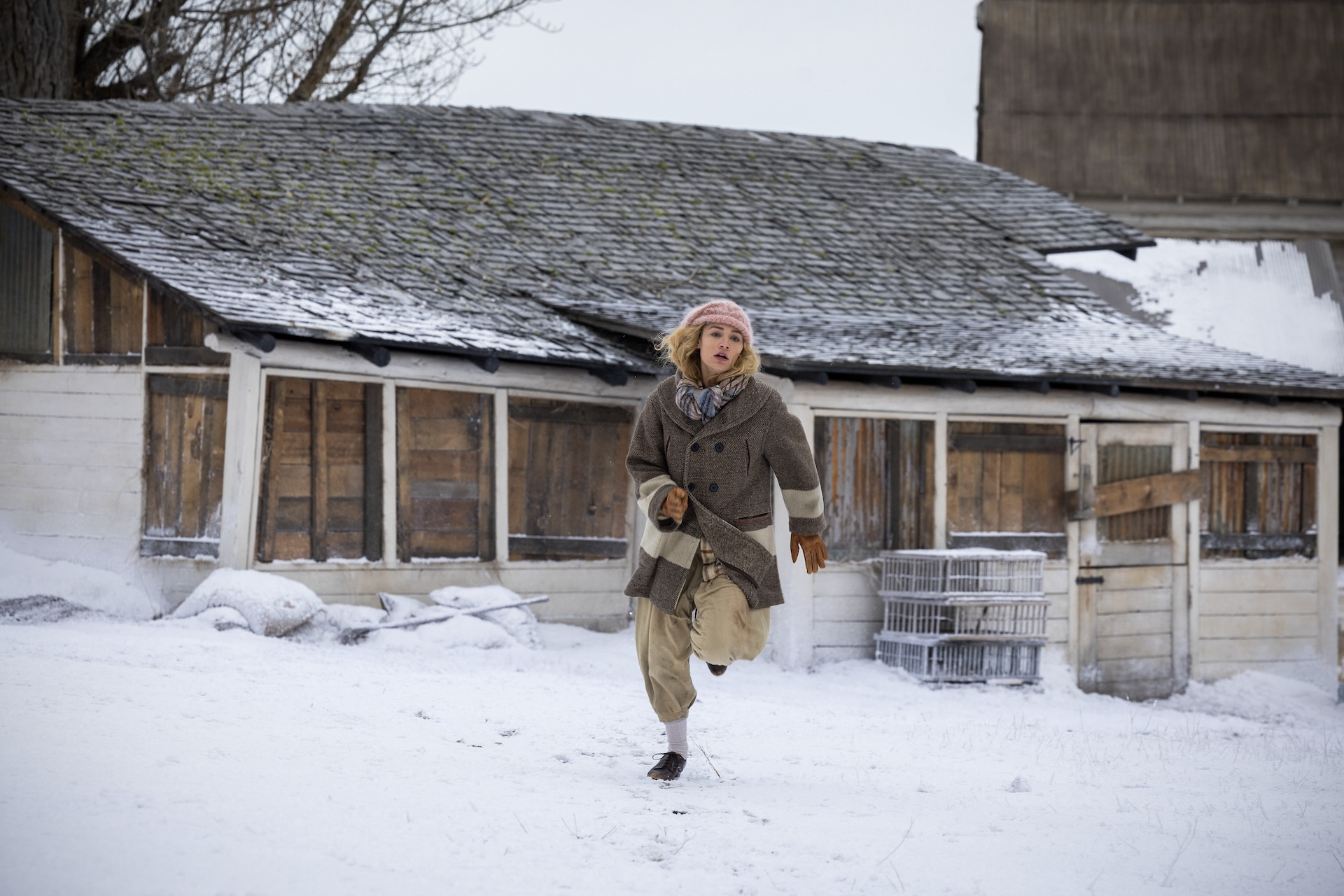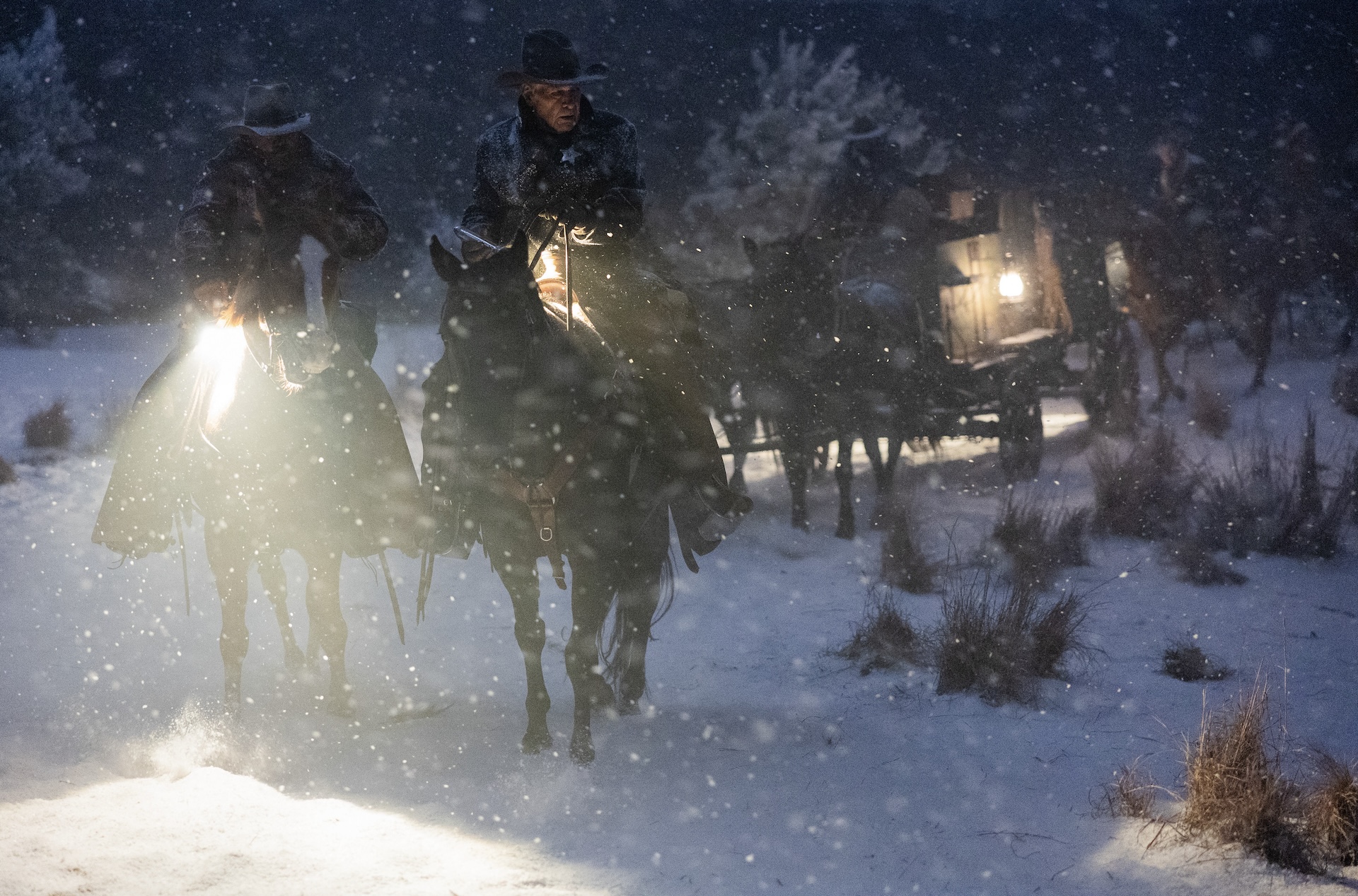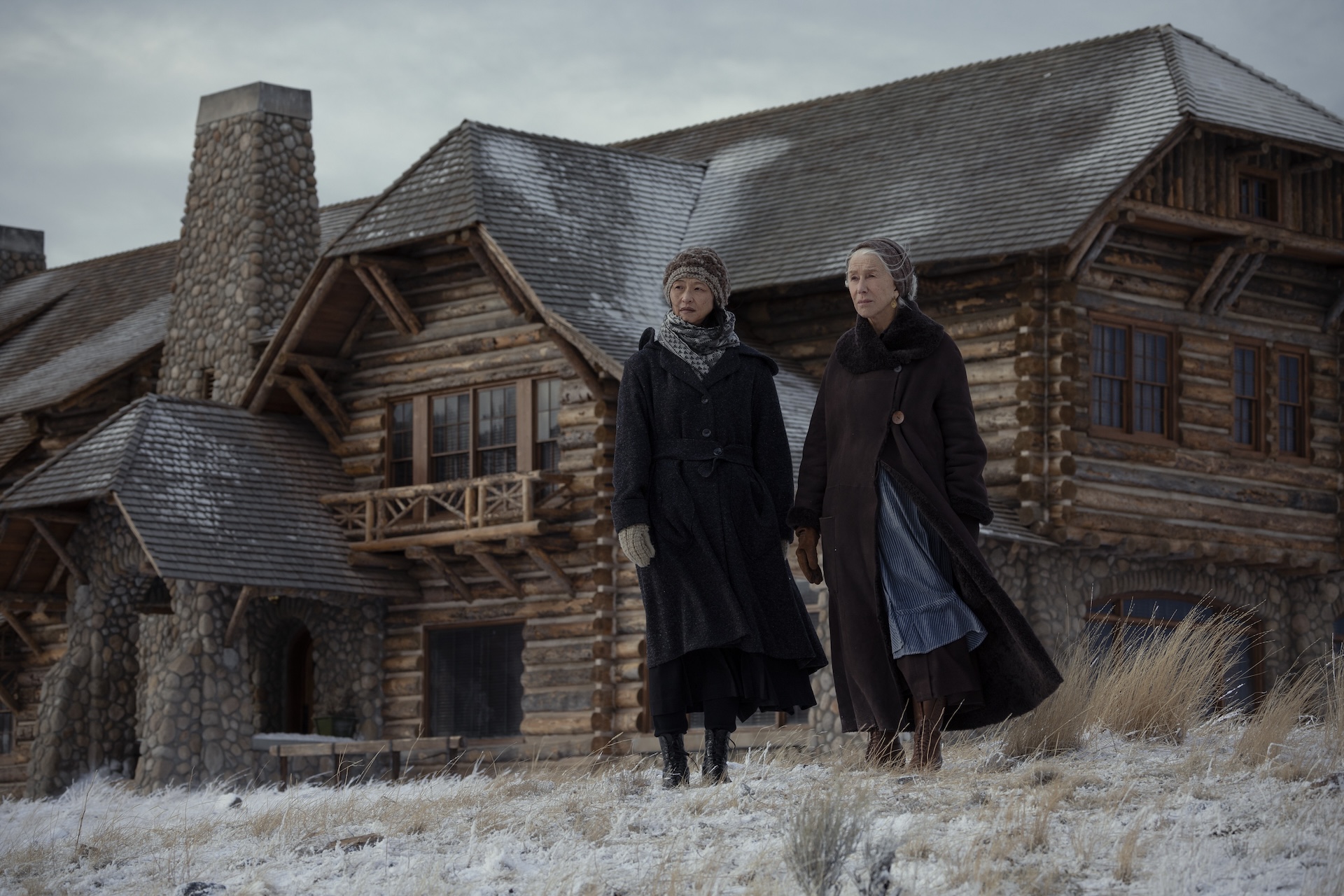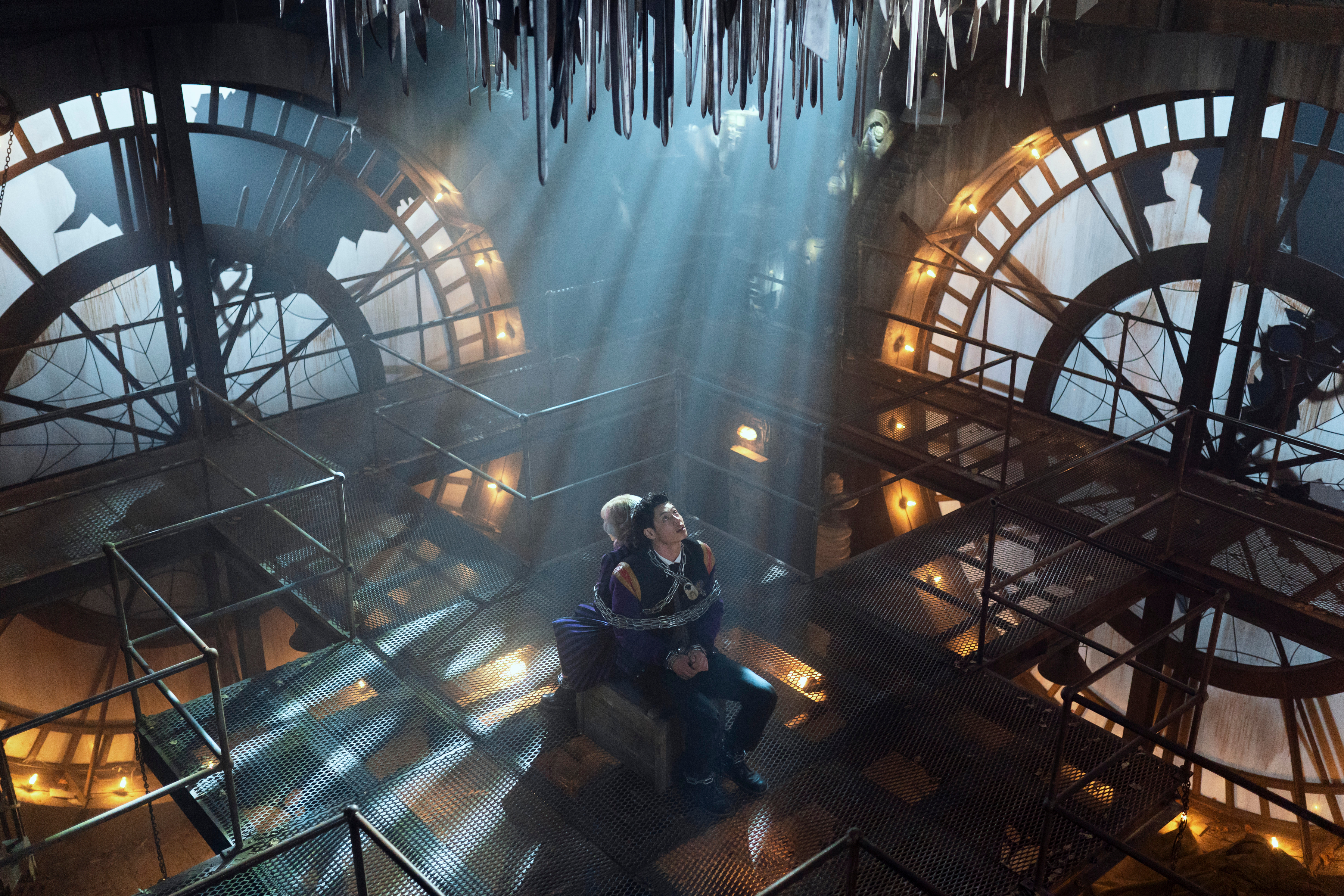It’s just the way life goes: When you don’t want snow on your shoot, you’re gonna get it. And when you want it, you won’t get it.
That’s exactly what happened for “1923” co-production designers Cary White and Lisa Ward for the Taylor Sheridan show. On Season 1, they were nearly driven out of Montana by the snowfall near the end of production — and they were not trying to put any hint of winter weather onscreen. Season 2 was supposed to have all of its Montana-set scenes in the most frigid, snowy, brutal winter, and… well, you probably see where this is going.
“We prayed for snow,” said White, who, along with Ward, supervising art director Sean Ryan Jennings, and set decorator Carla Curry, received a 2025 Emmy nomination for Outstanding Production Design for a Narrative Period or Fantasy Program. “And we got it, but on the last day of shooting. That was the only real snow we had.”
You’d never know that most of the snow you see in Season 2 didn’t actually fall from the skies: In its second season, “1923” became one of that rarest of things that Western fans particularly love — a winter Western. “Winter was such an important character in this piece, and it really fought the Duttons throughout the entire season,” Ward said. How the production team created it is shown vividly in the video below. Snow may have been hard to come by, but in part that’s because it was almost too cold for it to snow. “We had one of the harshest winters on record, I think, in Montana,” Curry said.
“We knew what it should look like on screen in a real way, and we’d make these documents that were basically phases of winter because we wanted to touch upon different looks and different feelings of winter,” Ward said. “And so we had one look that was those cold white sky days where the mud is all frozen and tire tracks are frozen and the puddles around the roads are frozen, but there’s not deep snow everywhere.”
“And then we had days that were just the deepest post-blizzard snow where the sun comes out in the morning, and you get that glitter on top of everything, and everything is shapeless and strange and snowy,” Ward said. “So we really had sort of a full spectrum of looks that correlated to the different moments in the scripts and the different beats and how that winter environment was interacting with actors and vice versa.”
The special effects team got a workout.
“There was a lot of paper used on this show because they get out there with these blasters and blast white mulch paper everywhere,” White said. “It’s a combination. All the snow is a combination of visual effects and special effects, except for that last day when it really did snow.”

“The real snow actually complicated things because it prevented special effects snow from being laid,” Ward added. “And then you get through two hours of shooting, and what you’ve been shooting has melted. So that becomes a huge continuity issue. And there were times when we couldn’t use paper snow. We had to use the combination of paper snow and display snow; or because the horses were going to be interacting with it and their hooves slip on the display snow, we needed to incorporate salt, which is also used. And we needed to look at the difference in how the salt was going to lay in with the paper snow. So there’s so many different elements and so much of it is an actor going to be interacting with this? Is it something that we just see as background? Where can VFX step in and help us?”
A lot is made about Sheridan’s extraordinary production setup in Texas, but nearly all of the exterior shots set in Montana are actually shot in Montana. It’s the little added touches that really sell that feeling of cold, though. “I really want to say just how incredible our scenic painters were,” Ward said. “We paid so much attention to how the frost should look on the windows and how the frost should appear on car windows.”

White and Ward are truly a team, even though they’re at very different stages of their careers. White is an industry veteran of decades, with one of his earliest production designer roles being for the 1989 miniseries “Lonesome Dove,” one of the most acclaimed of all Westerns, whether on a big screen or small. He’s worked on 23 Westerns in total and has written a coffee table photo book on the Western genre due out in the fall of 2027. (His filmography is extraordinarily diverse, though, such as also serving as production designer on the original “Mean Girls.”) Ward’s list of credits is much smaller but fascinating in its own right: She collaborated with White on “Yellowstone” and “1883” but also worked as art director on “First Cow” and “Showing Up” — yes, she’s able to toggle effortlessly between Kelly Reichardt indies and sprawling Sheridan productions.
And on Season 2 of “1923” White and Ward were a true team. Despite the plot taking place in many different locations, they never separated, so as to ensure continuity of vision. “Cary has set such a strong aesthetic really starting with ‘Yellowstone’ and moving through ‘1883’ and ‘1923,’” Ward said. “That’s a world that we both understand really deeply. And I think we wanted to capture that and continue it through this season, even though we were in so many different places this season.”
If Montana was always Montana onscreen, the cities they represented had to get a little more creative. San Antonio stands in for the wintry New York City streets Julia Schlaepfer’s Alexandra explores once getting out of Ellis Island. On a soundstage, they recreated the 1920s interior of Grand Central Station — down to light fixtures from the period no longer at the actual Grand Central Station, and recreated by Steve Joyner and his fabrication studio in Austin.
Those lights are glimpsed for just a moment in Season 2. But it’s those little details that make the world of “1923” come alive, and its story to have the impact that it does. “Worldbuilding” is a term usually applied more to fantasy or sci-fi properties, but in every sense, it’s what White and Ward have achieved in this sprawling Western epic.

Yet Western fans have particularly loved the Winter Western aspects of “1923” Season 2. Simply because there aren’t that many Winter Westerns. “The Great Silence,” “The Hateful Eight,” “Day of the Outlaw,” “McCabe & Mrs. Miller” are among the few snow-blanketed Westerns out there. They’re all very different visually from the genre’s typical tumbleweed and sagebrush aesthetic. “The Searchers” offers us a glimpse of Monument Valley in snow, but only briefly — in no small part because dealing with snow and winter always means defining a lot of different gradations.
“We were thinking a lot about phases of winter,” Ward said. “Sort of moving from that deep winter and deep snow, crystal on the trees and branches through a more moderate cold, muddy, snowy, icy into what feels, in Montana, like possible emergence of spring. Where you’re suddenly looking at patches of snow and ice rather than deep drifts and eddies, and just the nuances of all that.”
Mission accomplished. While watching “1923” you’ll want to reach for a warm blanket.



